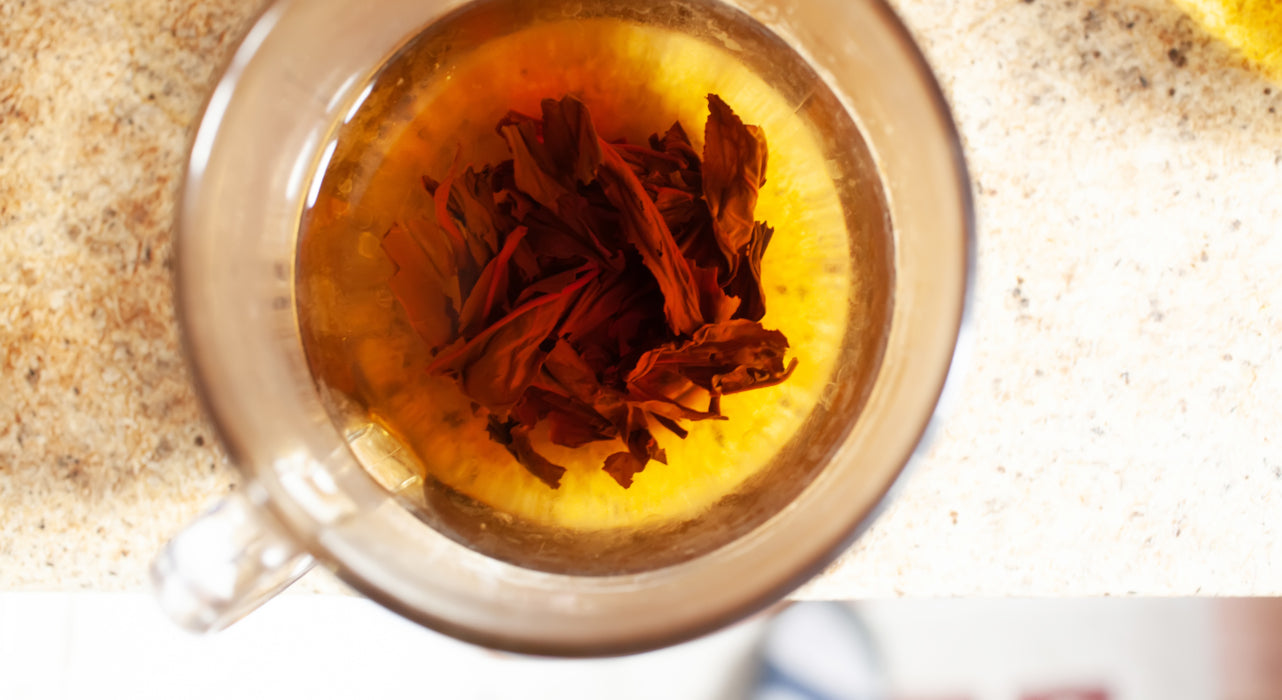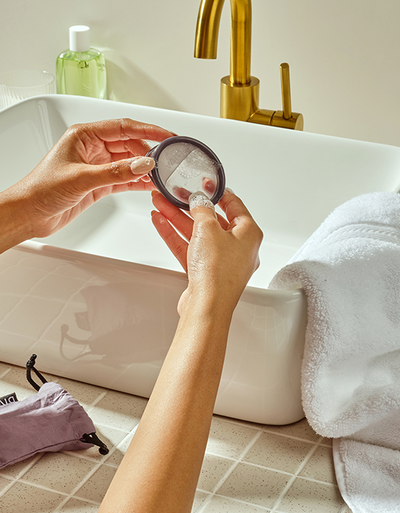
In this article /

Certaines personnes obtiennent d’excellents résultats avec des remèdes naturels contre des affections courantes. Alors que pour d’autres, les analgésiques en vente libre, et même les médicaments sur ordonnance, pourraient être la meilleure solution.
Si vous vous interrogez sur les thés, les herbes et autres remèdes naturels pour soulager les crampes menstruelles, nous avons effectué quelques recherches. Certains de ces remèdes naturels méritent peut-être d’être explorés, tandis que d’autres ne peuvent pas se révéler efficaces.
Qu’est-ce qu’une crampe menstruelle ?
Tout d’abord, que se passe-t-il réellement lorsque vous ressentez une crampe menstruelle ? Les crampes menstruelles sont des contractions musculaires de l'utérus alors qu'il se prépare à se débarrasser de la muqueuse utérine. Tout ce que vous pouvez faire pour améliorer le fonctionnement musculaire et réduire les spasmes musculaires dans tout le corps peut être utilisé pour aider les muscles de l’utérus.Les fluctuations des hormones sexuelles peuvent entraîner des crampes menstruelles intenses et parfois être le signe d’une maladie sous-jacente. Cela ne fait jamais de mal d’enquêter davantage auprès d’un professionnel de la santé. D’autres fois, ces symptômes sont normaux pour votre cycle et moins débilitants.
Remèdes courants contre les douleurs menstruelles
Si vous souffrez régulièrement de crampes menstruelles ; vous connaissez les vieilles veilles. Les remèdes courants contre les crampes menstruelles comprennent :- Thérapie par la chaleur, comme l'utilisation d'un coussin chauffant ou la prise d'un bain chaud
- Analgésiques en vente libre tels que l'ibuprofène ou le naproxène
- Yoga et autres techniques de relaxation
- Exercice léger ou étirements
- Boire beaucoup d'eau pour rester hydraté
- Dormir suffisamment et gérer le stress

Un régime anti-inflammatoire peut, au fil du temps, contribuer à réduire l’apparition de crampes menstruelles.
Fait ou fiction?
Les règles douloureuses peuvent être débilitantes et il est important de trouver une solution qui vous convient. Certaines de ces solutions naturelles pourraient-elles être une option efficace pour lutter contre les douleurs menstruelles mensuelles ?De nombreux thés équilibrant les hormones pour les crampes menstruelles ont fait leur apparition. Même si le thé est délicieux et apaisant, est-il vraiment la réponse à vos douleurs menstruelles ?
Fiction
Avant de commander désespérément toutes les « herbes contre les crampes menstruelles » ou les « thés contre les crampes menstruelles » qui surgissent sur votre Instagram, voici des remèdes naturels qui manquent de preuves scientifiques :- Une tasse de thé pour soulager les crampes. Le thé à la camomille, à la menthe poivrée, aux feuilles de framboisier, à la cannelle, au fenouil ou même le thé vert n'ont qu'un effet apaisant ou calmant. Aucune preuve ne suggère que ces tisanes puissent réduire les douleurs menstruelles.
- Bien que les huiles essentielles puissent avoir une odeur agréable et procurer une sensation de relaxation, il n’existe aucune preuve scientifique pour étayer l’affirmation selon laquelle elles peuvent soulager les crampes.
Faits
Il existe plusieurs remèdes naturels scientifiquement prouvés contre les crampes menstruelles, notamment :- Le gingembre a des propriétés anti-inflammatoires et s’est avéré efficace pour réduire l’intensité des crampes menstruelles.
- Acides gras oméga-3 présents dans le saumon, les graines de chia et les avocats. Il a été démontré que les acides gras oméga-3 réduisent l’inflammation et soulagent la douleur.
- Magnésium et aliments riches en magnésium, comme les amandes, les épinards et le chocolat noir. Le magnésium est un minéral qui aide à réguler les contractions musculaires et à réduire les spasmes.
- La thermothérapie soulage les crampes en apaisant et en relaxant les muscles de l'utérus et des zones environnantes.
- L'exercice peut aider à réduire la gravité des crampes en bougeant et en étirant les muscles, ainsi qu'en libérant des endorphines, qui sont des analgésiques naturels. L'exercice régulier tout au long de votre cycle menstruel aidera à prévenir les crampes.
- L’acupuncture et l’acupression se sont révélées efficaces pour réduire l’intensité.
- Avoir un orgasme provoque également une libération d'endorphines, ainsi que la contraction puis la relaxation des muscles de l'utérus. Cependant, les orgasmes ne fonctionnent pas pour tout le monde et ils peuvent parfois augmenter les crampes.
- Appliquer des crèmes contre les crampes qui contiennent des ingrédients scientifiquement prouvés comme l'huile de ricin, le camphre, la gaulthérie et l'arnica, une formule naturelle puissante pour soulager la douleur et l'inflammation.










